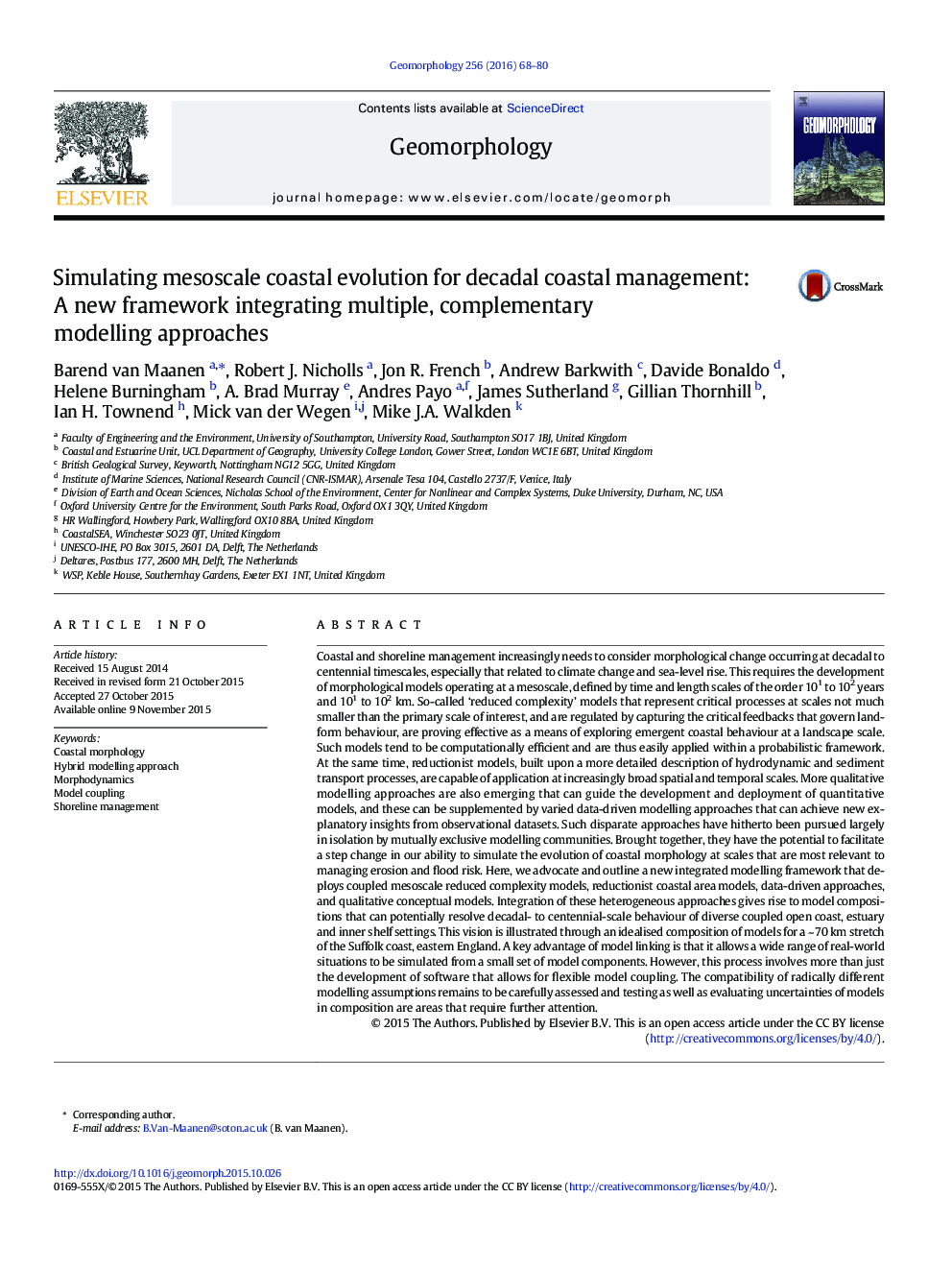| کد مقاله | کد نشریه | سال انتشار | مقاله انگلیسی | نسخه تمام متن |
|---|---|---|---|---|
| 6431663 | 1635393 | 2016 | 13 صفحه PDF | دانلود رایگان |

- A new modelling framework for simulating decadal coastal evolution is presented
- It integrates reduced complexity, reductionist, data-driven and conceptual models.
- It helps to develop model compositions that can simulate coupled system behaviour.
- It is illustrated through an idealised composition of models for the Suffolk coast, UK.
- The integrated modelling approach is intended to support coastal management.
Coastal and shoreline management increasingly needs to consider morphological change occurring at decadal to centennial timescales, especially that related to climate change and sea-level rise. This requires the development of morphological models operating at a mesoscale, defined by time and length scales of the order 101 to 102Â years and 101 to 102Â km. So-called 'reduced complexity' models that represent critical processes at scales not much smaller than the primary scale of interest, and are regulated by capturing the critical feedbacks that govern landform behaviour, are proving effective as a means of exploring emergent coastal behaviour at a landscape scale. Such models tend to be computationally efficient and are thus easily applied within a probabilistic framework. At the same time, reductionist models, built upon a more detailed description of hydrodynamic and sediment transport processes, are capable of application at increasingly broad spatial and temporal scales. More qualitative modelling approaches are also emerging that can guide the development and deployment of quantitative models, and these can be supplemented by varied data-driven modelling approaches that can achieve new explanatory insights from observational datasets. Such disparate approaches have hitherto been pursued largely in isolation by mutually exclusive modelling communities. Brought together, they have the potential to facilitate a step change in our ability to simulate the evolution of coastal morphology at scales that are most relevant to managing erosion and flood risk. Here, we advocate and outline a new integrated modelling framework that deploys coupled mesoscale reduced complexity models, reductionist coastal area models, data-driven approaches, and qualitative conceptual models. Integration of these heterogeneous approaches gives rise to model compositions that can potentially resolve decadal- to centennial-scale behaviour of diverse coupled open coast, estuary and inner shelf settings. This vision is illustrated through an idealised composition of models for a ~Â 70Â km stretch of the Suffolk coast, eastern England. A key advantage of model linking is that it allows a wide range of real-world situations to be simulated from a small set of model components. However, this process involves more than just the development of software that allows for flexible model coupling. The compatibility of radically different modelling assumptions remains to be carefully assessed and testing as well as evaluating uncertainties of models in composition are areas that require further attention.
Journal: Geomorphology - Volume 256, 1 March 2016, Pages 68-80